A poster to remind your students to add detail and description to their writing to bring their characters to life.
Encourage your students to make their characters talk, think, feel and move.
Updated: 02 Aug 2016
A poster to remind your students to add detail and description to their writing to bring their characters to life.
Non-Editable: PDF
Pages: 1 Page
Years: 3 - 5
Reads and comprehends texts for wide purposes using knowledge of text structures and language, and by monitoring comprehension
Identifies and describes how ideas are represented in literature and strategically uses similar representations when creating texts
Extends Tier 2 and Tier 3 vocabulary through interacting, wide reading and writing, morphological analysis and generating precise definitions for specific contexts
Plans, creates and revises written texts for multiple purposes and audiences through selection of text features, sentence-level grammar, punctuation and word-level language
Analyses representations of ideas in literature through narrative, character, imagery, symbol and connotation, and adapts these representations when creating texts
Create and edit imaginative texts, using or adapting language features, characters, settings, plot structures and ideas encountered in literary texts
Create and edit literary texts by developing storylines, characters and settings
Create and edit literary texts, experimenting with figurative language, storylines, characters and settings from texts students have experienced
Create texts, using or adapting language features, characters, settings, plot structures and ideas from literary texts they have encountered
Create texts by developing storylines, characters and settings, and using language features from literary texts they have encountered and from their own experiences
Create texts, experimenting with vocabulary, figurative language, storylines, characters and settings from literary texts they have encountered
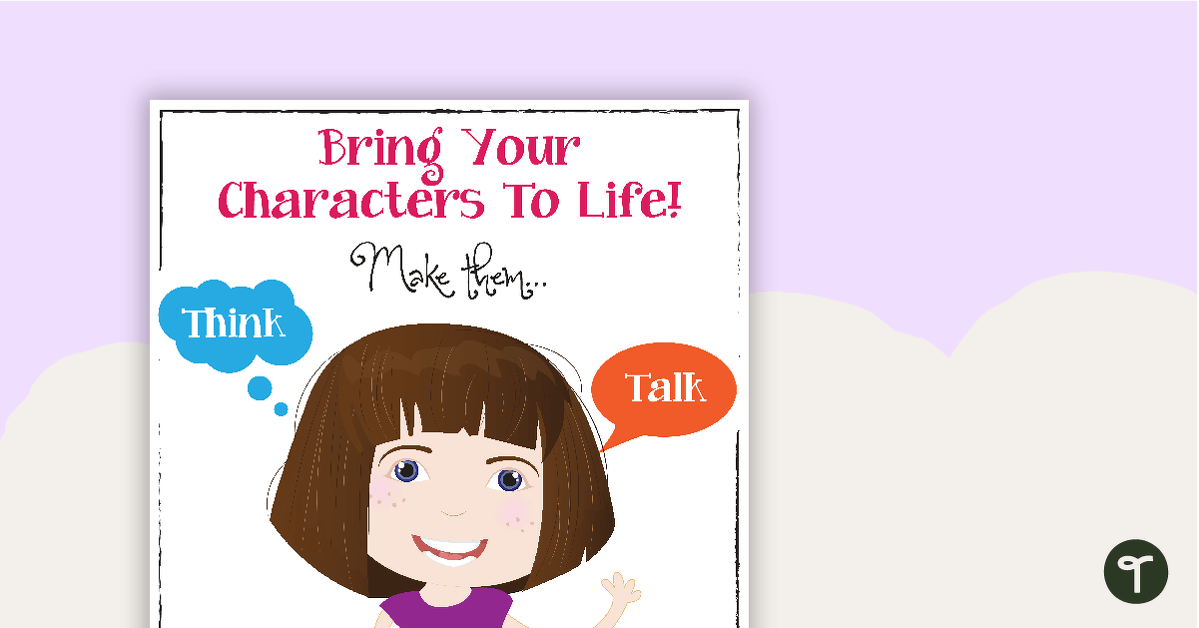
A poster to remind your students to add detail and description to their writing to bring their characters to life.
Encourage your students to make their characters talk, think, feel and move.
Reads and comprehends texts for wide purposes using knowledge of text structures and language, and by monitoring comprehension
Identifies and describes how ideas are represented in literature and strategically uses similar representations when creating texts
Extends Tier 2 and Tier 3 vocabulary through interacting, wide reading and writing, morphological analysis and generating precise definitions for specific contexts
Plans, creates and revises written texts for multiple purposes and audiences through selection of text features, sentence-level grammar, punctuation and word-level language
Analyses representations of ideas in literature through narrative, character, imagery, symbol and connotation, and adapts these representations when creating texts
Create and edit imaginative texts, using or adapting language features, characters, settings, plot structures and ideas encountered in literary texts
Create and edit literary texts by developing storylines, characters and settings
Create and edit literary texts, experimenting with figurative language, storylines, characters and settings from texts students have experienced
Create texts, using or adapting language features, characters, settings, plot structures and ideas from literary texts they have encountered
Create texts by developing storylines, characters and settings, and using language features from literary texts they have encountered and from their own experiences
Create texts, experimenting with vocabulary, figurative language, storylines, characters and settings from literary texts they have encountered

We create premium quality, downloadable teaching resources for primary/elementary school teachers that make classrooms buzz!
Would you like something changed or customised on this resource? While our team makes every effort to complete change suggestions, we can't guarantee that every change will be completed.
Did you spot an error on this resource? Please let us know and we will fix it shortly.
Are you having trouble downloading or viewing this resource? Please try the following steps:
If you are still having difficulty, please visit the Teach Starter Help Desk or contact us .

A fun game for students to play in small groups to consolidate their understanding of adjectives.
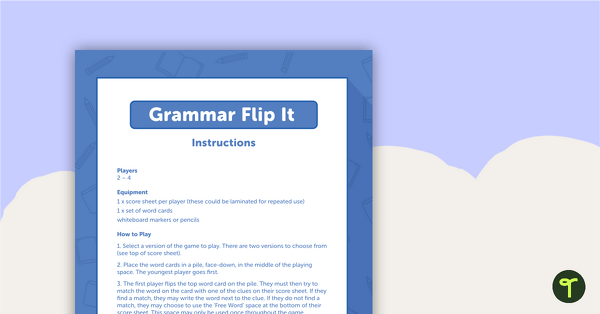
A fun game for students to play in small groups to consolidate their understanding of verbs.
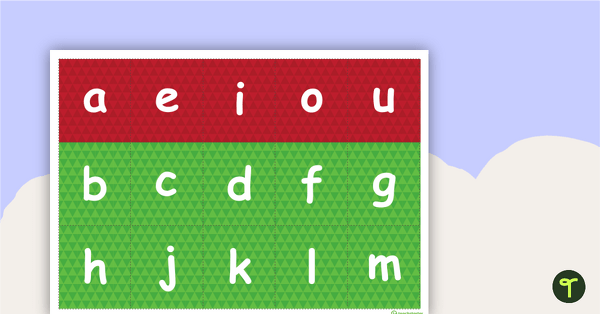
A sheet of letters to use when making CVC words.
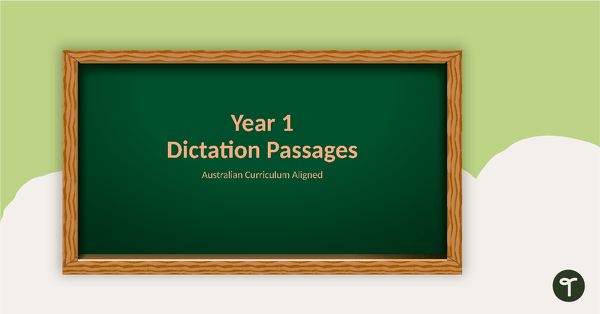
Use this set of Year 1 editing passages to help your students demonstrate their spelling, punctuation and grammar knowledge.
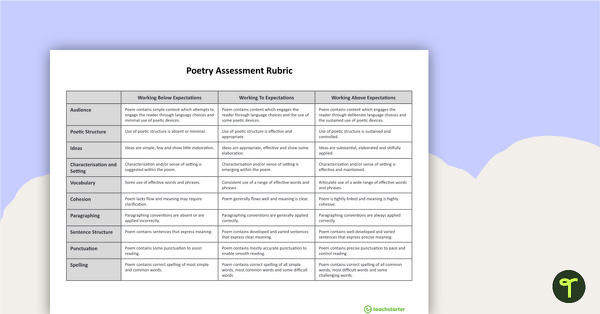
A NAPLAN-style rubric designed to help teachers to assess student's poetry.
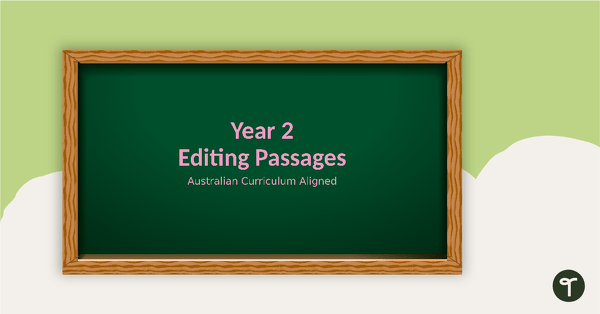
Use this set of Year 2 editing passages to help your students demonstrate their spelling, punctuation and grammar knowledge.
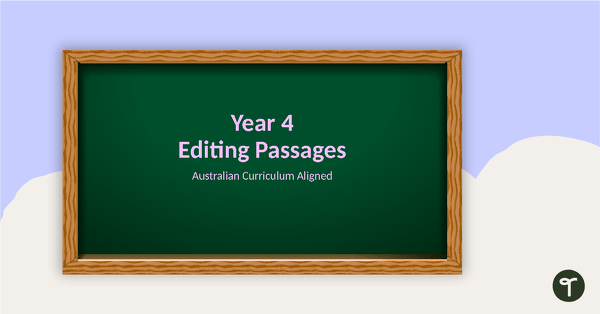
Use this set of Year 4 editing passages to help your students demonstrate their spelling, punctuation and grammar knowledge.

A set of 28 generic QAR question cards for students to use as a comprehension task after reading.
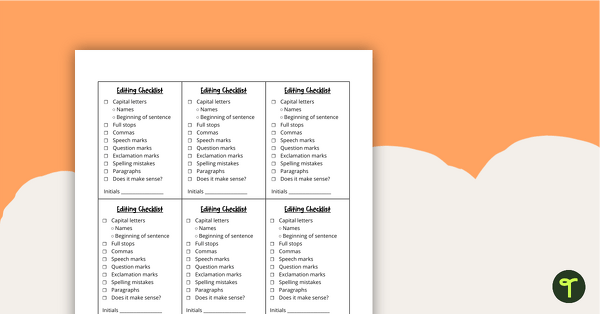
Get your students using this editing checklist so that no mistake gets left behind!
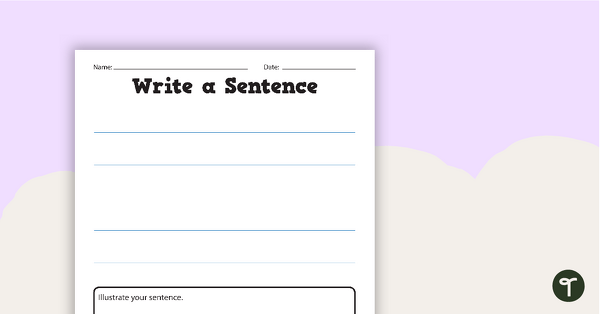
A worksheet for beginner writers to practice their handwriting.
0 Comments
Write a review to help other teachers and parents like yourself. If you'd like to request a change to this resource, or report an error, select the corresponding tab above.